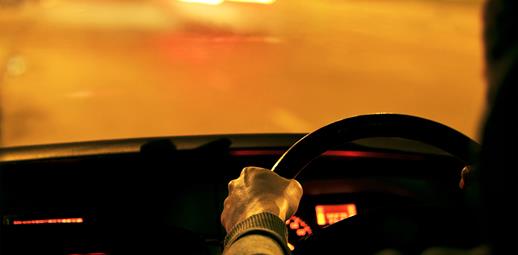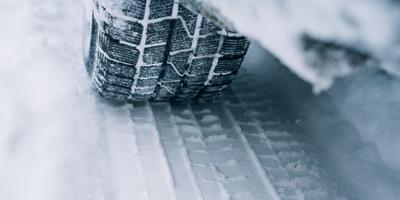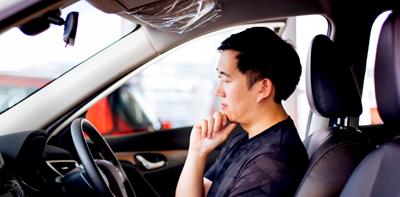
Driving at night can feel very different to getting behind the wheel during the day. If you get nervous driving in the dark, read our tips below so you can feel more confident behind the wheel when the sun goes down.
Easy as hack
A Pass Plus driving course is a great way to improve your skills for driving in the dark. Although they’re usually taken by new drivers, the courses can be taken at any time and only take around six hours to complete.
At a glance
|
1. Working lights and clean windscreens will give you the clearest view of the road at night 2. Take caution when driving in the dark by driving slower, paying attention to the surface of the road and looking out for pedestrians and animals 3. The best night-time drivers set off earlier, use headlights in a way that doesn’t dazzle other drivers and pack breakdown essentials |
Wondering about how to drive in the dark? Make sure you follow these tips to stay safe.
Check your lights
When it comes to driving in the dark, a fully functioning set of lights are your best friend. You’ll need to check all the following work:
- Side lights
- Headlights (main and dipped beams)
- Fog lights
- Indicators (left and right, front and back)
- Brake lights
- Reverse lights
- Hazard lights
If any of these lights aren’t working, you should repair them before hitting the road. If you’re not confident about doing this yourself, you can always ask for the help of a professional.
Protect your eyes
Driving in the dark takes more concentration than daytime driving, to make life easier you should try and avoid looking directly at oncoming cars.
If you wear glasses, you might want to speak to your optician about whether an anti-reflection coating on your lenses will help.
If you are having issues driving at night, particularly when it comes to things like clearly reading road signs, it’s a good idea to get your eyes tested.
Keep your windscreen and mirrors clean
Dirt, frost and snow can impair your view of the road during daylight hours. If you allow them to stay on your windows and mirrors when driving in the dark, you might notice that your view of the road is even more affected.
Make sure you clean all mirrors and windows (inside and out) using the right products. That way, you’ll remove dirt, frost and snow without leaving smears on the glass that might cause lights to dazzle you behind the wheel.
You should know how to demist your windows too. Familiarise yourself with the window heater settings and turn on the air con. The temperature controls aren’t just for summer and will help to remove moisture from the inside of your car.
And remember, if there’s any scratches or chips on your windscreen, these can make the dazzle from streetlights and other vehicles worse. The best approach is to get your windscreen repaired by a professional before you hit the road.
Set off early
It can be tempting to drive faster on emptier night-time roads but with reduced visibility, it’s important to do two things
- take things slow
- increase the distance between you and other cars
Your headlights offer a restricted amount of visibility so it’s important that you can stop safely within the distance you can see ahead of you. The best way to do this is by giving yourself as much time as possible to react to the road ahead. Being a little more cautious with the accelerator is definitely a good idea.
Don’t miss: Speeding: How much time do you really save?
Use your lights correctly
We’ve already covered the importance of making sure your lights work, but it’s equally important to use your lights properly.
Rule 113 of The Highway Code says you should use your headlights half an hour before sunset and half an hour after sunrise. Rule 114 of the Highway Code says they should be used in a way which doesn’t dazzle other drivers, so dipped headlights are usually best for town and city driving.
On winding country lanes using your full beams can give you a better idea of what’s ahead. Be sure to dim them if you come across other vehicles to ensure that you don’t dazzle the driver.
When it comes to using your fog lights, don’t be tempted to turn them on unless you really need them. When is that? If visibility falls to 100 metres or less (roughly the length of a football pitch), it’s time to hit the switch.
If you’re tired, take a break
It may sound obvious, but it’s important to stay alert when driving in the dark. Tired drivers are a serious risk on the road and fatigue contributes to 4% of fatal road crashes in Britain. Because it’s so difficult to spot, the true figure could be much higher.
Rule 91 of The Highway Code recommends you take a break of at least 15 minutes after every two hours of driving. But it’s not just mid-journey breaks that matter but getting enough sleep before you set off, too. The stats show that you’re 20 times more likely to fall asleep at the wheel at 6am than at 10pm.
If your eyelids are feeling heavy, make sure you plan a pit stop to stretch your legs and get some fresh air. Caffeine helps and sharing your driving with another driver is a great idea from the Royal Society for the Prevention of Accidents .
Read this: Driving when tired: What you should do and how to avoid it.
Pack breakdown essentials
If the unthinkable happens and your car breaks down while driving in the dark, it’s handy to have a few essentials in your boot
A high-visibility jacket, torch (with spare batteries) and a reflective warning triangle will help you to stay safe when stranded on the roadside. A portable charger, empty fuel can and jump leads could get you back on the road.
If you’re travelling during winter, it’s a smart idea to pack warm clothes, blankets, an ice scraper, de-icer and some basic food and drink to make your time waiting for a breakdown service that little bit more bearable.
Pay extra attention to the surface of the road
Black ice and potholes can make driving during the day tricky, navigating the same hazardous road surfaces at night is even more of a challenge. That’s why it’s important to pay extra attention to the road in low-light conditions and especially during winter.
If you’re driving an unfamiliar route, it's also worth keeping your eye on road markings that might be less visible when the sun goes down. Markings are not only there to keep us safe but could help you avoid being issued with a fine.
Sometimes hitting a pothole is unavoidable, if you find your car damaged by an uneven road surface try following our advice on how to claim for pothole damage.
Park somewhere safe
Technically it’s not driving, but there are steps you should take when parking your car in the dark, or half an hour before sunset and half an hour after sunrise.
Firstly, you should always park facing the same direction as traffic unless you’re in a recognised parking space (Rule 248 of The Highway Code).
Secondly, if you park on a road with a speed limit above 30mph, you’ll need to use your sidelights. The same applies in foggy conditions. The switch for your sidelight shows two semi-circle-style shapes emitting light beams.
Watch out for people and animals
Like everything else, people are trickier to spot while driving in the dark, especially if they’re wearing dark clothing. To help keep everybody safe, pay extra attention to pedestrian crossings and people stepping off the pavement when driving in towns and cities.
There are plenty of nocturnal animals that are more likely to run out in front of you at night. It’s important to stay alert for any foxes, deer or cats that might suddenly appear and follow our advice on how to drive safely if there are animals on the road.
Original article written 24th September 2021, updated 4th November 2023
Looking for car insurance that can be there for you wherever you break down?
You can find out more about our car insurance here.


